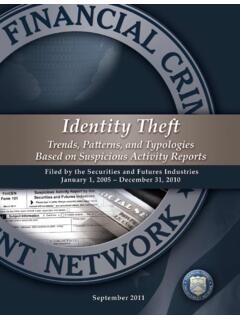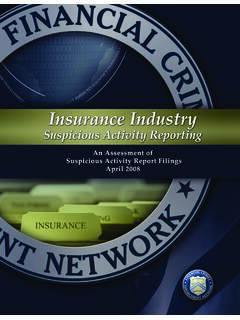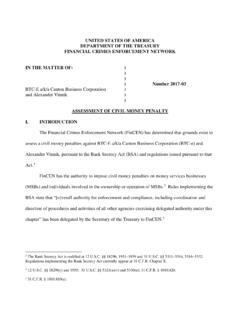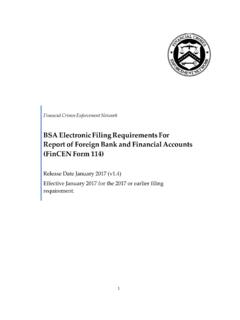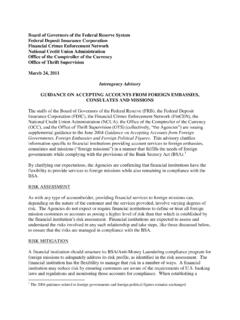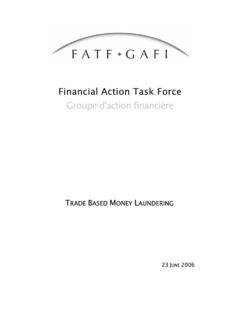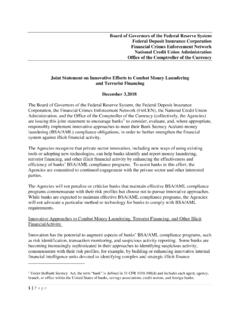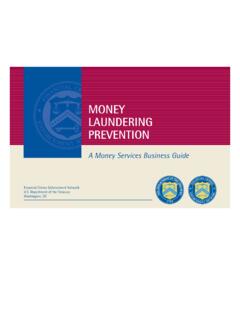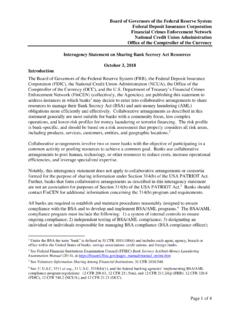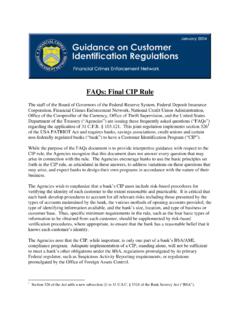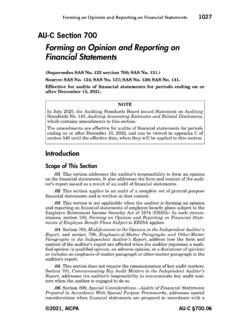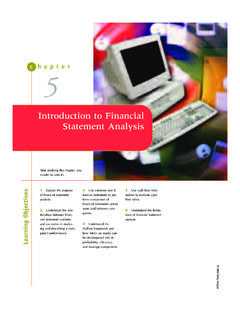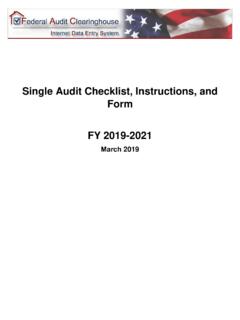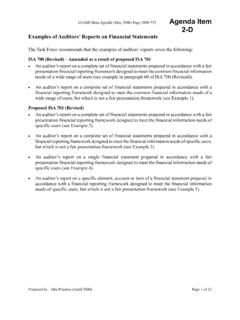Transcription of Notice to Customers: A CTR Reference Guide
1 Why is my financial institution asking me for identification and personal information? Federal law requires financial institutions to report currency (cash or coin) transactions over $10,000 con-ducted by, or on behalf of, one person, as well as mul-tiple currency transactions that aggregate to be over $10,000 in a single day. These transactions are reported on Currency Transaction Reports (CTRs). The federal law requiring these reports was passed to safeguard the financial industry from threats posed by money laundering and other financial crime. To comply with this law, financial institutions must obtain per-sonal identification information about the individual conducting the transaction such as a Social Security number as well as a driver s license or other govern-ment issued document. This requirement applies whether the individual conducting the transaction has an account relationship with the institution or not. There is no general prohibition against handling large amounts of currency and the filing of a CTR is required regardless of the reasons for the currency transaction.
2 The financial institution collects this information in a manner consistent with a customer s right to financial privacy. Can I break up my currency transactions into multiple, smaller amounts to avoid being report-ed to the government?No. This is called structuring. Federal law makes it a crime to break up transactions into smaller amounts for the purpose of evading the CTR reporting require-ment and this may lead to a required disclosure from the financial institution to the government. Structur-ing trans actions to prevent a CTR from be ing report-ed can result in imprisonment for not more than five years and/or a fine of up to $250,000. If structuring in-volves more than $100,000 in a twelve month period or is performed while violating another law of the United States, the penalty is doubled. Notice to customers : A CTR Reference Guide following scenarios are examples of structuring. 1. John has $15,000 in cash he obtained from selling his truck. John knows that if he deposits $15,000 in cash, his financial institution will be required to file a CTR.
3 John instead deposits $7,500 in cash in the morning with one financial institution employee and comes back to the financial institution later in the day to another em-ployee to deposit the remaining $7,500, hoping to evade the CTR reporting requirement. 2. Jane needs $18,000 in cash to pay for supplies for her wood-carving business. Jane cashes a $9,000 per-sonal check at a financial institution on a Monday, then cashes another $9,000 personal check at the fi- nancial institution the following day. Jane cashed the checks separately and structured the transactions in an attempt to evade the CTR reporting requirement. 3. A married couple, John and Jane, sell a vehicle for $15,000 in cash. To evade the CTR reporting require-ment, John and Jane structure their transactions using different accounts. John deposits $8,000 of that money into his and Jane s joint account in the morning. Later that day, Jane deposits $1,500 into the joint account, and then $5,500 into her sister s account, which is later transferred to John and Jane s joint account.
4 4. Bob wants to place $24,000 cash he earned from his illegal activities into the financial system by us-ing a wire transfer. Bob knows his financial insti-tution will file a CTR if he purchases a wire with over $10,000 currency in one day. To evade the CTR reporting requirement, Bob wires the $24,000 by purchasing wires with currency in $6,000 increments over a short period of time, occasionally skipping days in an attempt to prevent the financial institution from filing a you have further questions, please contact FinCEN s Regulatory Helpline at (800) 949-2732 Examples of Structured Transactions
